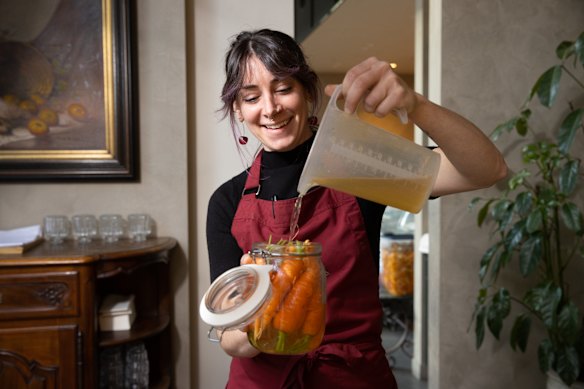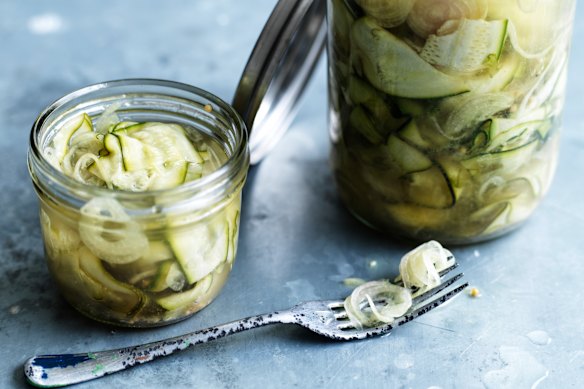The truth... It is a beautiful and terrible thing, and should therefore be treated with great caution.
— Albus Dumbledore
Ignore advertising
Advertising tells you every day that you’re too old, too poor, too unfashionable. Why? Because unhappiness sells. In this video, I explain how advertising is
Read the full article…
Rewatching Picnic at Hanging Rock at 50: an unsettling portrayal of place, silence and disappearance
IT AWAKENS: Long dormant Russian volcano erupts, spews ash 4 miles high
My Recent Media Diet, the Resistance Edition
My Brilliant Friend (season four). If there’s one thing I’ve watched in the past several years that I wish had gotten more attention from viewers, critics, and awards panels, it’s this wonderful show. (A+)
Andor (season one). A rewatch to prep for season two. I didn’t understand what the fuss was about this show the first time around, but this second viewing was a revelation. Andor is easily the best Star Wars thing since Empire. (A+)
Shōgun. Rewatch with my son. Just an incredible show all the way around. (A+)
The simple ‘golden ratio’ for pickling just about anything
Chef and passionate pickler Caitlin Koether shares the secret to perfect pickles, the low-cost, healthy way to perk up pretty much everything.
Pickles are a healthy, scrap-saving and sparky addition to everything from cheese platters to salads to toasties. Why wouldn’t you make your own? We checked in with pickle and fermentation expert and chef Caitlin Koether from Melbourne restaurant Molli to talk recipes, tips and her “golden ratio”.

Why pickle?
“It’s satisfying to take something perishable and find a way to enjoy it throughout the year,” says Koether. “It’s also fun because it changes the texture and the flavour. It opens up the possibilities of how you can use that vegetable.”
Pickling keeps vegie scraps out of the compost or bin, too. Broccoli stem and peel can be added to pickling liquid to enhance the flavour of other pickled ingredients and as extra snacky nibbles. Cauliflower leaves might be used as a stopper to keep vegetables from floating above their pickling liquid.
The golden ratio
Koether’s golden ratio can be adapted to any quantity, as long as you keep the same proportions. “It’s the best recipe to start with,” says Koether. “With this ratio, you get a level of acid, salt and sugar while still maintaining the integrity of the food you’re preserving.”
- 3 parts vinegar
- 2 parts sugar
- 1 part water
- ¼ salt
For example these quantities would be enough to fill about 4 x 500ml jars, depending on the size of your carrots:
- 750ml vinegar
- 500g sugar
- 250ml water
- 60g salt
Now, let’s get started
- Start with great produce, perhaps from a farmers’ market. Carrots are a perfect beginner vegetable, especially in winter when they are fresh and crisp.
- Wash and cut your vegetables. Small carrots can be scrubbed and left whole, and larger carrots can be cut into coins or chunks.
- Rinse a clean jar with a little vinegar and add carrots to the jar, along with any other flavours. “If you have a herb that’s wilting in the fridge, garlic or spices in the cabinet, add whatever you want to flavour it,” says Koether.
- Mix your golden ratio of vinegar, sugar, water and salt, stirring to dissolve. Pour the liquid over the carrots in the jar to cover them. Close the lid and leave it in the fridge for a week before using your crunchy pickled carrots (see below). The flavours will continue to develop over months.
- Alternatively, bring the pickling liquid to a boil, then pour it over the carrots. These carrots will be ready to eat within a couple of hours, but they will be softer. Remove the hot-pickled carrots from the pickling liquid, drain them, and use them within a few days.
How should I use them?
Put pickles in salads and sandwiches, chop them up small and use them like a chutney or ketchup, and snack on them like popcorn. You can also think of them as a kind of condiment.
“If you break it down to the fundamentals, pickles are a seasoning agent,” says Koether. “Instead of using salt, lemon juice or vinegar in something, you can use pickles.”

Quick pickle questions
What are the golden rules?
Start with great produce, apply the golden ratio and give it a go.
Which vinegar, sugar and salt should I use?
Whatever you have is fine, but the products you start with will affect the result.
What about hygiene?
Wash your hands, jars and surfaces and trust the vinegar. “Swirl a bit of white vinegar in a clean jar before you fill it,” says Koether. “Vinegar is more powerful than any sanitiser.”
How long will my pickles last?
“This recipe lasts indefinitely, as long as the pickles are stored in the fridge,” says Koether. They will, however, lose nutritional value over time and may oxidise and darken. “They get a little raisiny and not so fresh.” For maximum enjoyment, she recommends consuming them within six months.
So what are you waiting for, let’s get pickling
